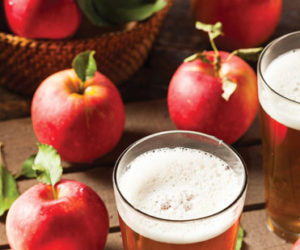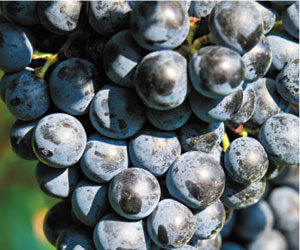A winemaking starter equipment kit is a great jumping off point for most people getting into the hobby. But some folks may already have a few pieces of the standard beginner equipment and don’t feel the need to get an entire starter set-up. In this segment, let’s take a look at some of the basic equipment that all winemakers should have along with a few upgrade options.
Fermenters
Food-Grade HDPE Plastic Bucket – The most cost-effective fermenter in the winemaker’s arsenal. Winemakers can perform punch-downs during fermentation on grape skins, they are lightweight, easy to clean, and easy to pour when handling large bags of juice or concentrate. Every beginner winemaker should start with a food-grade bucket for primary fermentation. We recommend a 7.9-gallon (30-L) bucket if you plan to produce standard 6-gallon (23-L) wine kits. But HDPE buckets are not meant for longer terms storage of your wine. Usually you want your wine to be in a bucket for about 2 weeks maximum.
Carboys – These can be purchased as either glass or plastic (PET) and are used as vessels for storing wine after primary fermentation is complete. Both types have their pros and cons. Glass is more dangerous if dropped, so special care is required when handling glass carboys. But glass is impermeable to oxygen, which can be either a pro or a con. Plastic carboys are a much safer option but there is a minimal exchange of oxygen through its surface. Either carboy you have, be sure to keep your wines topped off at all times. Typical carboy size is 6 gallons (23 L) for those that plan to produce 6-gallon (23-L) wine kits, supplemented with 5-gallon (19-L)and 3-gallon (11-L) sizes if working with fresh grapes.
Scientific Equipment
Hydrometer – A basic tool for measuring the density of liquid. A reading of 1.000 is the standard gravity of distilled water. Sugar adds density to water, so the more sugar, the higher the reading above 1.000. Ethanol is less dense than water, so the higher the alcohol concentration, the lower the hydrometer reading. Winemakers learn through experience that the density of a dry wine at the end of fermentation should be about 0.996 or lower, depending on the wine’s alcohol level.
Refractometer (optional) – For winemakers looking to upgrade, a refractometer is a nice tool to have to supplement their hydrometer. It provides quick and efficient readings of sugar levels in unfermented juices. You just need a drop of liquid to measure sugar levels with a refractometer. Alcohol confounds the refractometer reading, so it can only be used on unfermented juice.
Transfer Devices
Racking cane – All winemakers will need to eventually transfer their wine from one vessel into another vessel. An auto-siphon racking cane is the most cost-effective and efficient tool for transfering. No hobby winemaker should be without one.
Wine pump (optional) – Due to the fact that wine pumps can save winemakers from unnecessarily lifting large quantities of liquids, it is something many people should consider. Wine pumps are self-priming and will gently transfer liquids from one vessel to another.
Bottling
Bottles – Unless you plan to keg your wine, you’ll need a good stock of wine bottles. Buying new bottles assures you that the glass is clean and free of biological buildup, and that the closure size is uniform.
Corks – There are several options to choose from when dealing with closures, from synthetic corks, to natural cork, and everything in between. There is a reason that cork has been selected through thousands of years of experience to best close wine bottles, but several available options are almost as good and a fraction of the cost.
Corkers – If a corker is included in a winemaking starter kit, it will generally be a hand corker. This is a good starting place, but you may quickly outgrow this device and want to step up to either a wing, or floor, or table-top corker. More efficient and safer, these types of corking devices will make bottling day progress much smoother.
Cleaning
Brushes – There are two types of specialty cleaning brushes that all winemakers should keep on hand, a bottle brush to scrub out bottles and a carboy brush to scrub out the insides of larger vessels. They’re cheap and there is no reason not to have at least one of each.
Cleaners and sanitizers – While soap, elbow grease, and bleach can get the job done, they are less than ideal. Specialty cleaners and sanitizers have been specially formulated for wine-specific cleaning tasks and sanitizing purposes. Talk to other winemakers or learn more about them in Bob Peak’s “Techniques” article here: https://winemakermag.com/1570-cleaning-sanitizing
Miscellaneous
A few pieces of equipment that all winemakers need: Airlocks, bungs/stoppers, and some potassium metabisulfite (KMBS). Optional pieces of equipment that beginning winemakers might want: Degasser/whip, a good thermometer, and a subscription to WineMaker magazine.







